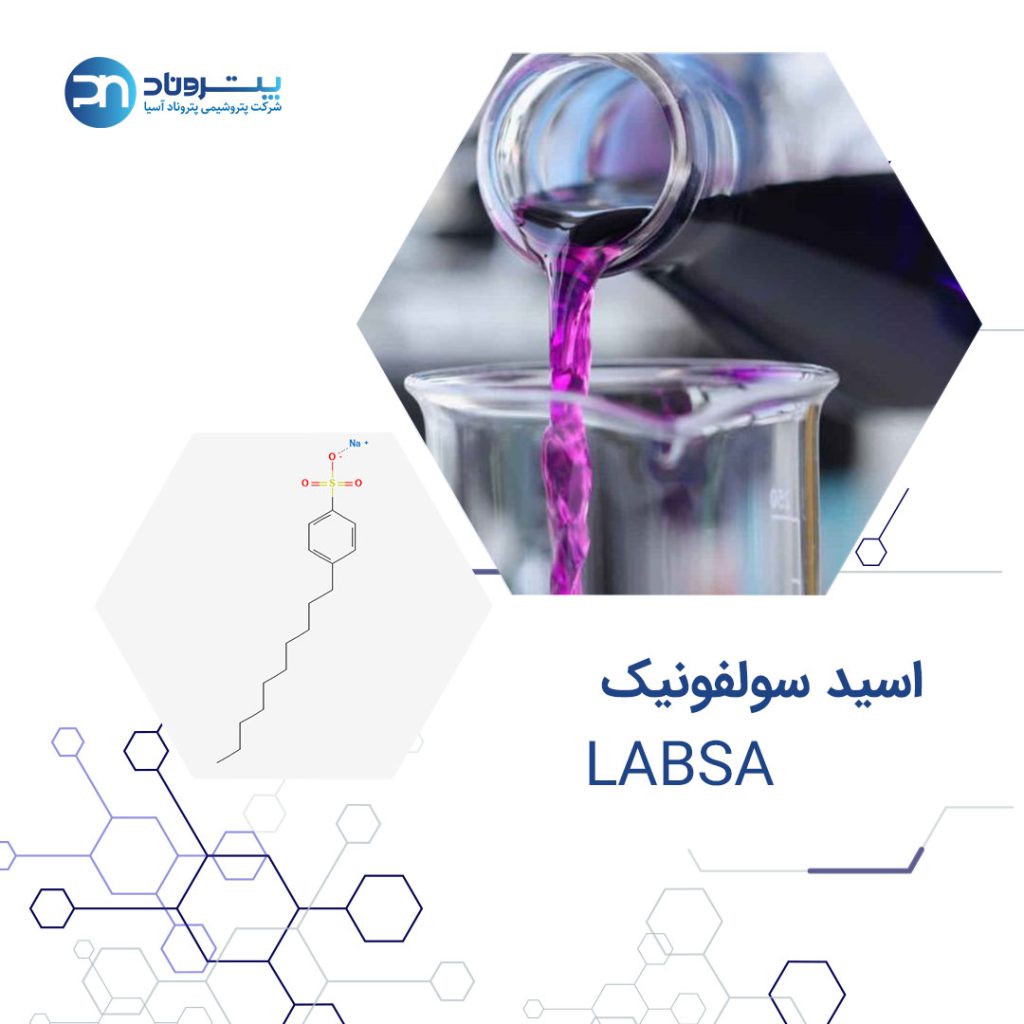Linear Alkylbenzene Sulfonic Acid (LABSA) is commercially derived from Linear Alkylbenzene or LAB. LABSA is an anionic surfactant and is a key ingredient in the production of detergents, including laundry detergents, dishwashing liquids, household cleaners, and industrial cleaners. It helps in removing dirt, grease, and stains by emulsifying and dispersing them.
Chemical Introduction
LABSA is industrially produced from LAB. Its general formula is RSO3H, in which R represents an alkyl or aryl group, and the hydroxyl group is sulfonyl. Sulfonic acid is a sulfur compound. Essentially, sulfonic acid can be seen as sulfuric acid with an organic portion replacing a hydroxyl group.
Physical and Chemical Characteristics
This chemical compound is oily and colorless, undergoing transformation into sulfonic acid in the presence of sulfur under specific combustion and So3 reaction conditions. Salts or esters of sulfonic acid are referred to as sulfonates. Due to their high polarizability, sulfonic acids typically crystallize into solids. These compounds are primarily colorless and non-oxidizing, with high acidity allowing them to dissolve readily in water, exhibiting detergent-like properties.
Practical Introduction
LAS (Linear Alkylbenzene Sulfonate) stands as the most prevalent surfactant globally, offering a variety of salts. Linear alkylbenzene sulfonic acid ranks among the most commonly used anionic surfactants due to its cost-effectiveness, efficacy, and linear chain’s biocompatibility. Being an anionic surfactant, LABSA has both hydrophilic (water-loving) and hydrophobic (water-repelling) properties.
It is produced through sulfonation, yielding non-volatile compounds with carbon chain lengths ranging from 10 to 14, phenyl groups, and sulfone groups in the para-position. The functional capabilities of alkyl benzene sulfonates are dependent on the length of the alkane chain. Surfactants are used in industry to enhance the interaction between polar and non-polar phases, such as oil and water or water and minerals.
Sulfonic acid is utilized in the formulation of numerous powder and liquid detergents as a cleaning and stain-removing agent. This water-soluble, non-volatile, moisture-absorbing substance also serves as an emulsifier, additive, lubricant, and corrosion inhibitor.
Applications
Linear alkyl benzene sulfonate is predominantly employed in household detergent preparation, including:
- Detergents and surfactants, molecules combining highly non-polar and polar groups. Since the mid-20th century, the use of sulfonic acid has surpassed that of soap in advanced societies. Approximately 2 billion kilograms of alkyl benzene sulfonates are produced annually for various industrial purposes. Currently, sulfonic acid is utilized in the detergent industry as a surfactant in the production of numerous powder and liquid detergents, representing one of the most cost-effective surfactants in the industry. Lignosulfonates, produced via lignin sulfonation, serve as components of drilling fluids and additives in certain types of concrete.
- Dyes: Many anthraquinone dyes are synthesized through the sulfonation process. Sulfonic acid exhibits an affinity for proteins and carbohydrates, explaining why most washable colors are based on sulfonic acid or contain sulfonyl active groups. Sulfonic peroxide acid is employed in food color preparation.
- Catalysts: Sulfonic acid serves as a catalyst, with examples like methane sulfonic acid and toluene sulfonic acid regularly utilized in organic chemistry as lipophilic acids dissolved in organic solvents. Dowex resins, derived from sulfonic acid and polystyrene are used as ion exchange catalysts in water softening processes.
- Pharmaceuticals: Sulfonic acid plays a role in the pharmaceutical industry for sulfa drug production, a group of antibacterial agents.
- Methane sulfonic acid is used as an electrolyte in zinc current batteries and acid batteries.

